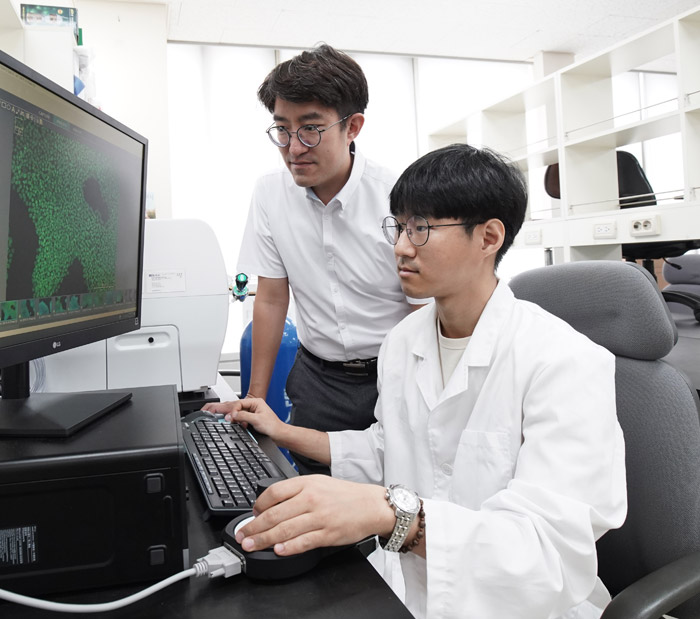Research Stories
Identification of molecular mechanism of dilated cardiomyopathy
Developed technology to reenact patient's cardiac disorder in laboratory and edit genome
Pharmacy
Prof.
LEE, JAE CHEOL
Professor Jaecheol LEE’s research team (School of Pharmacy) announced that they identified molecular mechanism of dilated cardiomyopathy(DCM) and provided potential drug target using patient-specific induced pluripotent stem cells (iPSCs).
Dilated cardiomyopathy (DCM) due to myocardial abnormality is a syndrome accompanied by ventricular dilatation and contraction dysfunction. It has a high prevalence rate of 1 to 2 per 100,000 Korean, but the precise mechanism is unknown.
The researchers looked into the cause of the DCM by generating iPSC from family with DCM and differentiating their iPSCs into cardiomyocytes (iPSC-CMs). They observed abnormal nuclear structures in iPSC-CMs with LMNA mutation. On the contrary, nuclear structure is returned to normal when the LMNA mutation was corrected through genome editing technique.
They found that abnormal nuclear structure of mutant iPSC-CMs causes the genome-wide epigenetic changes and eventually leads to the activation of platelet-derived growth factor (PDGF) signal pathway that is silenced in normal iPSC-CMs. The results suggest the novel therapeutic targets of DCM by applying some existing drugs approved by US Food and Drug Administration (FDA)in their disease model system.
Professor Jaecheol LEE said, "In the era of precision medicine, which can predict diseases through massive genetic information ofpatients, it is necessary to have a technique to experimentally verify such aprediction system” "Our study demonstrates the potential of patient-specific iPSCs system not only for the modeling the specific diseases but also developing new drug for cardiovascular diseases”.
This research was supported by Ministry of Science and ICT and National Research Foundation of Korea. It was published online in the world renowned journal “Nature”.


